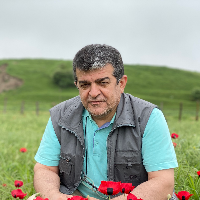Research and Analysis of the Parthian Settlement Pattern in the West Plain of Urmia Lake, Based on Geographic Information System (GIS)
Article Type:
Research/Original Article (دارای رتبه معتبر)
Abstract:
Nowadays, Archaeologists use spatial analysis of environmental data and archaeological field findings to clarify the patterns relating to the scattering of ancient settlements and their relation to their natural environments. Settlement pattern analysis is one of the topics in archeology that, rather than focusing on a specific ancient place, probes the region. The interpretation of past human behavior in relation to its dependence on components of the natural and ecological environment is at the center of this type of thought. The results of these analyses will identify factors that influence the choice of the ancestors' places of residence, such as: easy access to agricultural land, water, marine resources and exploitation of extractable mineral resources. The protection that the geographical location provides is another important and well-known factor in the context that it has a great influence on the shape of the deployment of human groups in an area. According to this method and by analyzing the results of the field survey in the west of Urmia Lake, the geographical variables affecting the settlements of the Parthian period in this area were investigated. In the field survey of the western plain of Urmia Lake, 14 sites of the Parthian period had been identified, which was drawn by analyzing the results of this survey and environmental data available, therefore, the pattern of settlement regions based on GIS maps was drawn. These patterns lie in the western plain of the Urmia Lake and have variables such as: sea level height, proximity to rivers, climate type, soil fertility, land use, vicinity to today's settlements, and salt extraction and trade. All the patterns from the west coast of Urmia Lake, have been measured; and the results of these field studies are presented in the upcoming article.
Keywords:
Language:
Persian
Published:
Journal of Archaeological Studies, Volume:15 Issue: 1, 2023
Pages:
183 to 212
https://www.magiran.com/p2589434
سامانه نویسندگان
مقالات دیگری از این نویسنده (گان)
-
The Head of the Zoroastrian Clergy Class and his Position in the Political System of Sasanians
Meysam Shahsavari *, Seyyed Mehdi Mosavi Kohpar, Alireza Hejebri Nobari, Javad Neyestani
International Journal of Caspian Sea, Caucasus, and Transoxiana Studies, Winter and Spring 2025 -
Research on the Symbolic Culture of Sassanid Bullae of the National Museum of Iran
Masoud Rashidi Nezhad, *, Cyrus Nasrollahzadeh
Parseh Journal of Archaeological Studies,




